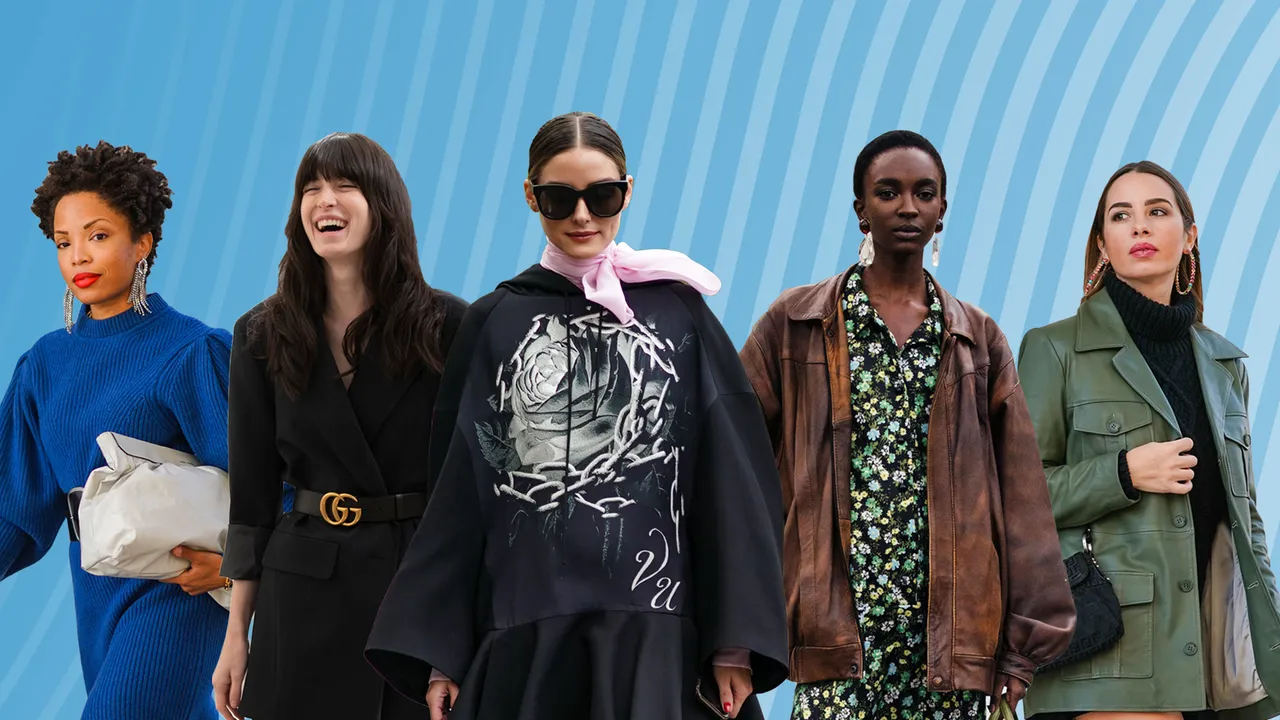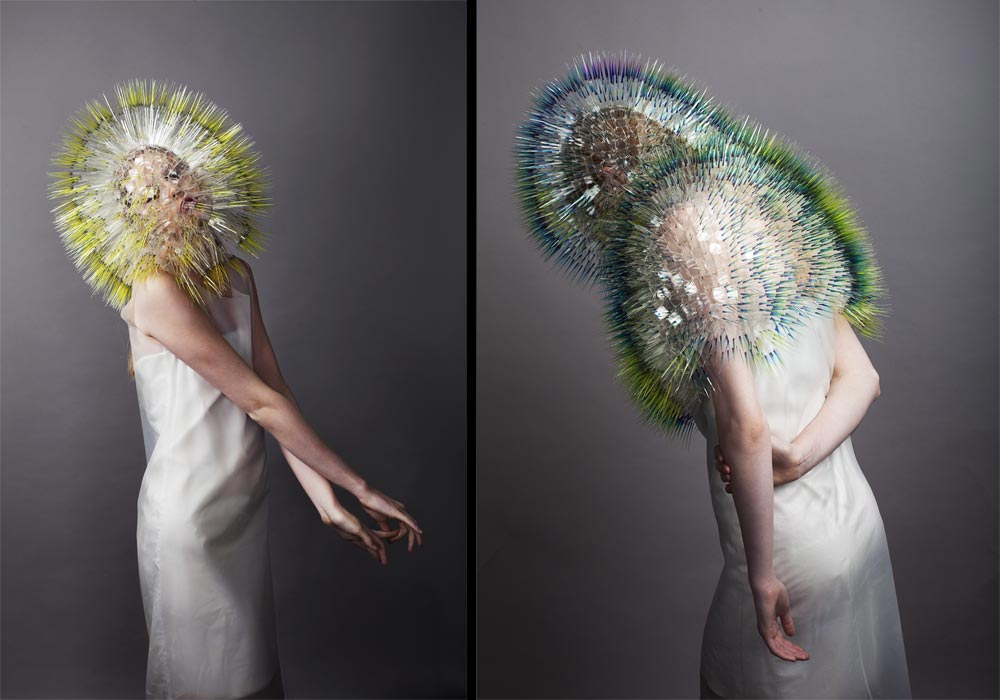
In the beginning, it was said: “we are what we wear,” bolstering identity expressed through attire. Gender and class, occupation and status, all revealed at first glance by clothing, which may never have made the monk but has always assisted. Until social dynamics took a turn, and the verb changed, from being to having: we have, then we are, the logic of capitalism. And there we were, doped in materialistic accumulation (more clothes, more sneakers, more bags, more logos, without feeling or suffering), when we were caught by the perverse twist that defines us today: to seem in order to be. In a moment when our relationships are more mediated than ever before by images—which is what we are reduced to in social networks and the digital environment—all that matters is appearances, what we appear to be. And reality is nothing but a set of deliberately constructed situations, a game of masks and fictions. Life passed through the filters and effects of TikTok and Instagram. The current favorite of fashion is the filter of normality.
Welcome to the era of the new normcore, proclaim the headlines. That supposed stylistic revolt from the beginning of the second decade of this century, an ode to dressing with no purpose other than covering the body for functional reasons, without meaning in terms of fashion, is back, also in the collections of more or less exclusive ready-to-wear. Is it what comes after the fantasy of Y2K infantilization? It could be considered so. Does it have to do with a socio-economic context of precarity, scared by the specter of inflation? Do not dismiss it. “As a general rule, financial uncertainty does not actually play such an important role, unless it becomes something devastating, like a major recession. I think this has more to do with a different spectrum shift, a minimalist reaction to the maximalism that emerged after the pandemic,” concedes Valerie Steele, director of the Fashion Institute of Technology Museum in New York. Sean Monahan, the American trend analyst who baptized the art of dressing boring as normcore in 2013, defines this revival of (supposed) normality as a “total collapse of casual dressing. As soon as you leave your neighborhood, you no longer know if people are going to the office, the gym, or meeting friends.” And without irony, unlike what happened a decade ago.
A year ago, Monahan (who is still at the forefront, now leading the consultancy 8Ball) wrote an article in The Cut in which he already pointed out what was coming, a “vibration change” noticed amidst the frenzy of mom jeans and dad sneakers. A kind of digital grunge spurred on by the new Z-generation teenage rage that preferred thrift stores to exclusive boutiques, despite the widespread centennial impact of the chavvy/sneaker vulgarization, exemplified by Balenciaga, for instance. And he cited Billie Eilish as the normcore 3.0 heroine. Just as it happened in its time against the hipsterism that dominated the dawn of social networks, the idea is to reclaim normality without the filters of offline existence, discarding anything with significance in fashion, or imposed by it, in the process. However, what the analyst seems not to have counted on is the fashion business’s ability for subterfuge, expert not only in cannibalizing aesthetic-social movements but also in practicing the art of post-truth. Because there is nothing more fake right now than this supposed new clothing normality.
Thanks to that tool that offers the possibility of adding or providing context to content, X/Twitter users embarrassed Dua Lipa, in mid-November, for the hyped normcore outfit worn during a visit to a Los Angeles radio station to promote her new tune, “Houdini.” Well, if not her, then the media that cheered to nausea the normative simplicity of the pop diva’s look: a red knit sweater and jeans. The former, from Bottega Veneta, over 1,000 euros; the latter, from Acne Jeans, close to 500.
Indeed, it is the price that defines or expresses the value of garments associated with the current fiction in which designers and brands abound since the appearance of the normality illusion in luxury fashion with that trompe-l’oeil of jeans, flannel shirt, and tank top from Matthieu Blazy’s debut at Bottega Veneta (fall-winter 2022). “Although we have moved away from the nineties as inspiration, the minimalist aesthetic is still there, but this time less austere,” refers Valerie Steele, who points out the transformation of the current normcore escalation as a rather more complex trend, in which the ‘old money style’—the alleged sartorial parsimony of old-money fortunes—underlies beneath so much blandness. In other words, it no longer appeals to the sloppiness of an Elaine Benes Seinfeld, the stylistic flag bearer of the original normcore, but to the minimalism of a Carolyn Bessette-Kennedy.
Of course, despite appearances, there is nothing normal about the proposals of recent seasons (and the upcoming ones, from Miu Miu to Fendi, passing through Ferragamo or the hitherto unsuspected of normativity Coperni and Gucci), with designs stripped of fantasy and grandeur to reduce garments to the bare minimum of cut, silhouette, and fabric. The media jargon, always in need of reductionist labels for the comfort of the writer, has dubbed them as silent luxury when we should say situational luxury: a fiction of reality artificially constructed to respond to one’s own benefit, that of the high-end fashion industry. “Timeless design and comfortable fabrics come together in the new wardrobe staples,” reads the statement that glosses over the fall-winter 2023-2024 collection of Loewe, highlighting oversized knit jackets, akin to those of your grandmother, and oh, Japanese denim jeans. Nothing below three and up to four digits. The only normal thing about the whole charade of the new normcore is that, its price.
Conclusion
The evolution of fashion reflects broader societal shifts, from emphasizing identity through attire to the current era of appearing to be a certain way. What began as a means of expressing one’s status and identity through clothing has transformed into a complex interplay of social, economic, and cultural forces.
The resurgence of normcore, characterized by its emphasis on simplicity and functionality, may seem like a return to a more authentic form of dressing. However, as with many trends in fashion, the reality is more nuanced. Behind the facade of normality lies a world of carefully curated appearances and exorbitant price tags, driven by the relentless pursuit of profit in the fashion industry.
As consumers, it’s essential to remain critical of the narratives presented to us by the fashion media and industry. While trends like normcore may offer the illusion of authenticity, they often mask deeper issues of inequality and exploitation within the fashion supply chain.
Ultimately, fashion is not just about what we wear; it’s about the values and ideologies we choose to embody through our clothing choices. Whether we embrace normcore or reject it, what’s most important is that we do so with a clear understanding of the forces at play behind the clothes we wear. Only then can we truly express ourselves authentically in a world that often prioritizes appearances over
substance.


